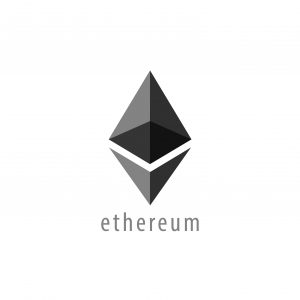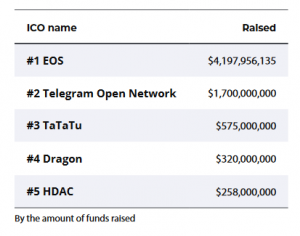WTF is an ICO ?
The financial realm has been hit by a recent phenomenon surrounding cryptocurrencies and blockchains. Whether you are a venture capitalist, an entrepreneur, a tech writer, a blockchain enthusiast, a crypto-trader or just an open-minded reader, you surely have heard about ICOs, this new fund raising method. Allow you 5 minutes to discover or re-discover ICOs with this high-level self-explanatory article.
ICO stands for Initial Coin Offering and is somewhat like an IPO, Initial Public Offering. Basically, it is a fundraising tool that trades new cryptocoins in exchange for cryptocurrencies. In other words, it is a project funded by liquid money (Bitcoin, Ethereum or Fiat currencies) against a new cryptocoin created on purpose for the project. These new coins are called tokens.
The Economist defines it in this matter:
ICO “coins” are essentially digital coupons, tokens issued on an indelible distributed ledger, or blockchain, of the kind that underpins bitcoin. That means they can easily be traded, although unlike shares they do not confer ownership rights. […] Investors hope that successful projects will cause tokens’ value to rise.
Explained to a five-year old child, it is a mechanism in which project leaders sell tokens against another already existing money.
Still not clear? We’ll get through that.
What is the matter with ICOs ?
Yesterday, in order for start-ups and companies to raise money to finance their projects, they had several choices:
- Make a bank loan
- Launch a crowdfunding campaign
- Sell shares of their capital to private investors
- Go public by selling shares of their capital to public investors if they have the requirements to do so (IPO)
Today, they can now raise money with a new method, an ICO. The project leaders create new digital blockchain-based tokens that they sell during a certain period of time in order to raise liquid money that’ll help them finance their project. Their underlying argument is that these tokens will gain value in time and are exchangeable at any time against another cryptocurrency.
Regarding the newness of this financing method, ICOs are today unregulated but not illegal. There are no restriction or few on who can participate in an ICO. A lot of projects have failed these last few years and a lot of scams have been identified. Also, most of the project leaders raise money before having developed the product. Thus, it is a highly risky investment.For venture-capitalist, it’s like funding with millions a start-up that is not even at Serie A financing stage but more likely to be at the Seed stage. A thorough upstream research is required before investing in those projects.
ICOs are a new-unregulated-yet not illegal way to finance a project, a kind of crowdfunding sale where project leaders sell digital tokens against money with a promise that these tokens will gain value in the future
Some ICOs have been quite successful. The sums raised can be astronomical. Actually, in 2017, ICO financing has exceeded venture capital fundraising and has become the number one method to finance start-ups and it is still exponentially growing.
Example of ICOs
One of the first largest ICO was made by the famous Ethereum. The founder Vitalik Buterin and his team issued between 22 July 2014 and 2 September 2014 about 60 million Ether (the new cryptocoin, the token) in exchange for 31,500 Bitcoin, equivalent at the time to $18.4 million USD. With this money, they could design and code the future Ethereum platform that was launched on the 30th of July 2015. The founders motivated the investors that this platform would allow people to build decentralized applications on it. Investors were seduced and paid in Bitcoin in exchange for Ether, the currency that would later be used as the “fuel” for building application through the platform. Back then, with 1 Bitcoin, you could purchase about 1,900 Ether that as of September 5th 2018 are valued at $465,500 USD. Well worth the investment!

Can you now see the logic behind an ICO?
By crafting a predefined number of coins and selling them to investors, you make a promise that with these new coins they bought, they will be able to buy a service or product in the future or trade them against another cryptocurrency.
What is incredible with Ethereum is that they both showcased the power of ICOs fundraising and enabled people to do the same. Indeed, having a platform like Ethereum allowing developers to build an application without building a blockchain from scratch, a lot of projects have seen the light through the platform. One could create its application and sell the tokens for further development against Ether or Bitcoin. Since the launch of the Ethereum platform, the rise of ICO has been exponential.
The most prominent demonstration of the potential of the Ethereum platform has been The Decentralized Autonomous Organization (The DAO) whose ICO was launched in May 2016. The aim of this application built on the Ethereum blockchain was to create a decentralized venture capital fund with a voting system ruled by DAO Token holders. Anyone holding DAO Token could vote for a project to be financed or not. This totally new way of governing an organization seduced around 11,000 investors who financed the project up to $150 million USD worth of Ether. Unfortunately, on June 17th 2016, The DAO was subjected to an attack that exploited a combination of vulnerabilities enabling the attacker to gain control of 3.6 million Ether among the 11.5 million Ether collected by The DAO.

This fail awakened people’s consciousness both in attention that has to be put when coding such application but mostly great hope for further projects and ideas to be financed through ICO.
Utility token vs Security token
The tokens sold during an ICO have to be distinguished in one of the 2 categories: utility token or security token.
What are these?
When Ethereum launched its sale of Ether, they promised that those tokens would be utilized as a mean of payment for using the Ethereum platform to create an application. This underlies that Ether is a token that enables the owner to use the platform, thus the product. In this fashion, Ether is a utility token.
When The DAO launched its sale of DAO token, they promised that those tokens would be utilized as a voting right for further-financed project and as a profitable “share”. The tokens would indeed give “dividend” to the owner resulting from The DAO’s profits. In this fashion, DAO Token was a security token.
The distinction between the two comes from the US Security and Exchange Commission (US SEC) that regulates the security tokens just like shares of a company. If a project is declared to issue security token, the company has to comply with the SEC regulation. To determine whether the token is a utility token or a security token, the SEC uses the Howey test which is a test created by the Supreme Court for determining whether certain transactions qualify as “investment contracts.” If so, then under the Securities Act of 1933 and the Securities Exchange Act of 1934, those transactions are considered securities and therefore subject to certain disclosure and registration requirements.
Put simply, if the token meet the 4 features below, then it should be considered as a security token:
Investment of money (1) in a common enterprise (2) with an expectation of profits (3) from the efforts of others (4)
In this fashion, distinguish a utility token from a security token is a subjective matter. Although some tokens are very obvious like DAO Tokens or Ether, others can be pretty hard to judge. It is more related to a subjective analysis according to which question you ask yourself:
- Is it a token that’ll be spent to use the product or service of the project?
- Is it a token that’ll provide only returns in a certain cryptocurrency?
- Is it a token that’ll be usable on other platform or to buy other product or services?
- Is it a token that’ll help the user develop a specific privilege within the project ecosystem?
The US SEC is not against ICO, it is against unregulated security tokens. Because the legal state of ICO is mainly undefined, most of the tokens are sold not as financial assets but as digital goods or as a digital coupon usable for further purchase. Indeed, very few ICO projects possess the resources and legal capability to issue tokens that comply with all applicable regulations of the SEC.
Then, what about regulation?
You have to consider that some jurisdictions are working on this gray area surrounding tokens. They tend to regulate them as a sale of shares, thus as financial securities. The unprecedented DAO attack and the propelled wide media coverage encouraged regulators to have a deeper look in terms of legality control. In the future, it is most likely that ICOs will be regulated, whether tokens will be considered as utilities or as securities. This could bear some financial and legal risks for investors but anyhow, ICOs will become a better way to finance projects than traditional ones.
What is so revolutionary about ICOs?
ICOs are true innovation in the traditional venture funding model. Usually, a project could take months to be financed by investment funds and requires to have already been financed by business angels, to have conducted strong marketing research and have shown a real usefulness and need from customers. Today, for an ICO to take-off, all you have to do is write a nice description of your project through a so-called white paper, design a beautiful website and showcase some drawings or pictures of your product. Never before have pre-products start-ups raised this much money paperless and in no time.
More and more ICOs are launched every month, reaching new sky-high records. In the last ICObench’s Weekly Review released on August 17th, EOS has reached a $4 Bn USD equivalent for their EOS Platform on June 1st 2018. Their platform aims to do the same as Ethereum platform: enable people to create decentralization applications. However, EOS project leaders pledged a better platform than Ethereum in terms of scalability and security. Obvisouly, investors were convinced.

Other projects are worth having a look. If you’re interested in checking around ICOs, you can navigate through the following websites:
- ICObench
- ICOrating
- Smith and Crown
- ICOwatchlist
- Token Market
- CoinSchedule
- Cryptocompare
As a conclusion, ICOs are new incredible way to finance a project. They shift the crowdfunding method as we know today into a decentralized, transparent and secured way of raising money through an unlimited number of investors. A point of attention needs to be added though, because of regulations being implemented in the near future. The US SEC took the lead by determining whether a token should be considered as a utility or a security, forcing project leaders to comply with SEC regulations if the token is seen as a security.
One can’t ignore the impact ICOs are going to have within the financial realm. As a matter of fact, traditional ventural capital is being paled by this new funding method. Somehow that was inevitable since traditional venture capital was probably the last industry to be impacted in its core by the digital age.

